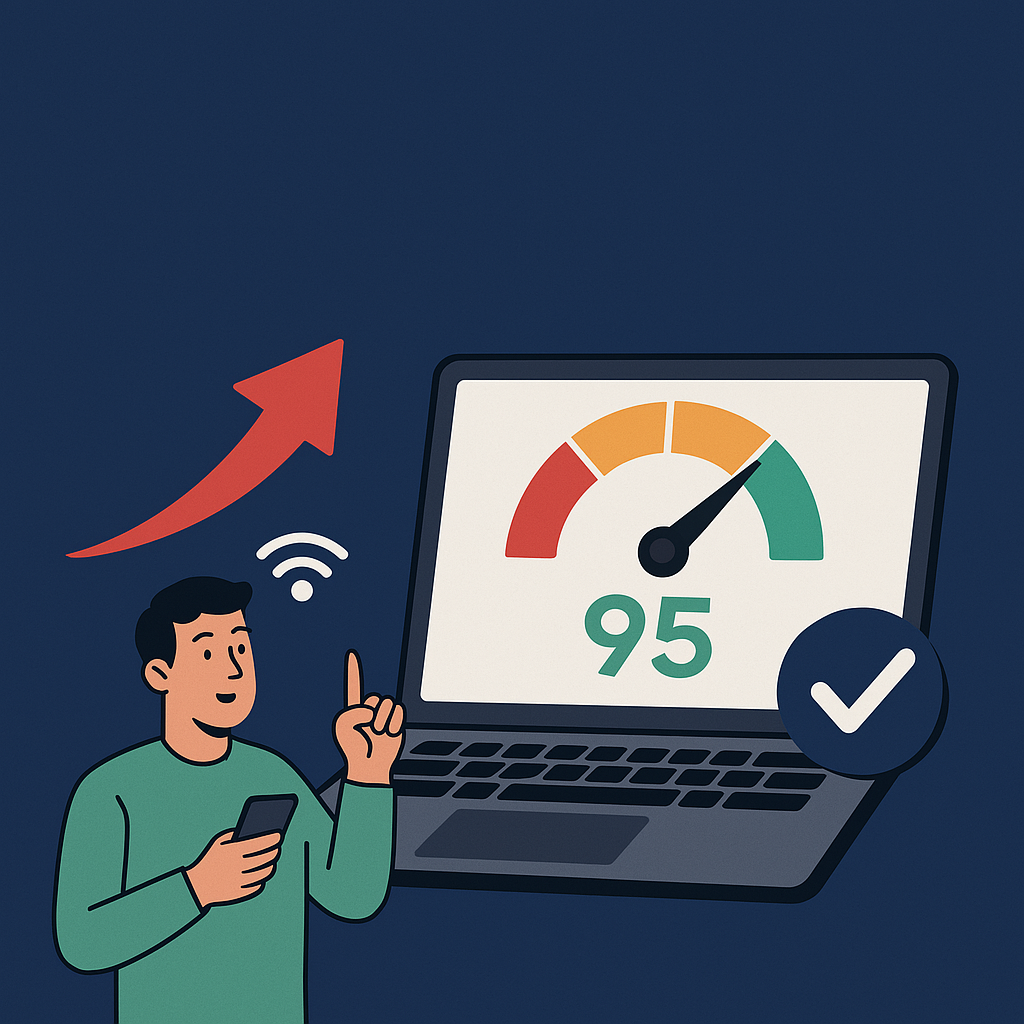Why a Good PageSpeed Insights Score is Crucial for Your Website
5 min read

Why a Good PageSpeed Insights Score is Crucial for Your Website
Hi, I’m Tiago, and today I want to talk about something that might be directly impacting your website’s success without you even realizing it: loading speed. Have you ever abandoned a site because it took too long to load? Your visitors do the same!
Google PageSpeed Insights (PSI) is a powerful tool for measuring and improving your site’s performance, helping not only with user experience but also with search engine rankings. Let’s dive into how it works and, more importantly, how you can optimize your site for better results.
What is Google PageSpeed Insights and How Does It Work?
PageSpeed Insights is a free tool from Google that analyzes your website’s speed and efficiency, providing a score from 0 to 100 based on multiple factors. But it’s not just about a number—it evaluates crucial aspects like:
- Performance: Measures loading time and navigation smoothness.
- Accessibility: Ensures compliance with digital inclusion standards.
- Best Practices: Checks if your site follows recommended development guidelines.
- SEO: Assesses how well your site is optimized for search engines.
If your site is slow, PSI will pinpoint exactly where the issues are and what you can do to fix them. But why does this matter so much? Let’s explore how speed directly impacts your online business success.

Why Does Website Speed Matter So Much?
✅ A Better User Experience (UX)
Have you ever tried to open a website on your phone and had to wait several seconds for it to load? Frustrating, right? Well, 53% of users abandon a site that takes more than 3 seconds to load. That means if your site isn’t fast, you could be losing customers before they even get a chance to engage with your content.
✅ Higher Google Rankings
Google has made it clear: faster websites rank higher in search results. If two websites have similar content, the one that loads faster has a better chance of appearing at the top. In today’s competitive market, this can be a game-changer.
✅ More Conversions and Sales
A fast website provides a smoother experience, making visitors more likely to take action—whether that’s filling out a form, signing up, or completing a purchase. Studies show that just a 1-second reduction in load time can increase conversions by up to 7%. Now, imagine the impact on your business revenue!
How to Improve Your Website Speed (and Your PSI Score)
Now that we understand why speed is crucial, let’s talk about how to optimize your site. Here are some essential best practices:
1. Optimize Images for Faster Loading
Large images are one of the biggest culprits of slow load times. To avoid this:
- Use modern formats like WebP, which reduce file size without losing quality.
- Compress images before uploading using tools like TinyPNG or Squoosh.
- Use responsive images to ensure smaller versions load on mobile devices.
2. Enable Lazy Loading (Smart Loading)
Lazy loading ensures that images load only when they come into view. This reduces the initial page load weight and improves perceived speed.
3. Minify and Compress Code (CSS, JavaScript, and HTML)
Unnecessarily large code files can slow down loading. Use tools like Terser and PurgeCSS to remove unnecessary spaces and reduce file sizes.
4. Use a Content Delivery Network (CDN)
A CDN (Content Delivery Network) distributes copies of your site across multiple global servers, ensuring users load content from the nearest server. This significantly reduces response times.
5. Leverage Browser Caching
Caching allows static site elements (like images, scripts, and stylesheets) to be stored temporarily on a user’s device, so they don’t have to be reloaded every time they visit. This enhances speed on return visits.
6. Choose a Reliable Hosting Provider and Optimize Your Database
If your site is hosted on a slow server, no optimization will fully fix the problem. Invest in a high-performance hosting service and optimize your database to reduce response times.
How to Monitor and Maintain Your Website Speed
Speed optimization is not a one-time fix—it requires ongoing monitoring. Here are some essential tools:
- Google PageSpeed Insights: for quick analysis and recommendations.
- Lighthouse (Chrome DevTools): for in-depth performance audits.
- GTmetrix and Pingdom: to test site speed from different global locations.
By running regular tests, you can identify potential issues before they impact your visitors.
Conclusion: Speed Equals Success!
A fast website isn’t just a bonus—it’s a critical factor in your online success. By optimizing your site’s speed, you improve user experience, boost your search rankings, and increase conversions.
If you think your site could be faster, don’t wait! Small adjustments can make a big difference.
💡 Need Help Optimizing Your Website?
Want a faster, more efficient website that ranks better on Google? With expertise in performance optimization and SEO, we can take your site to the next level. Let’s get in touch and transform your online presence! 🚀